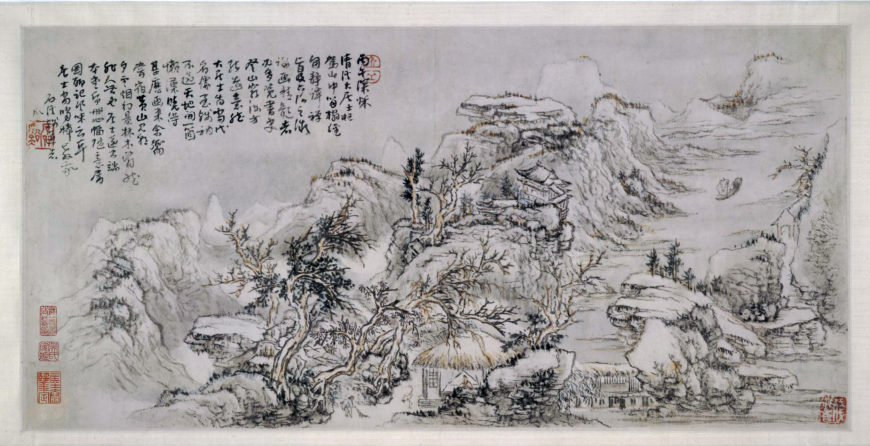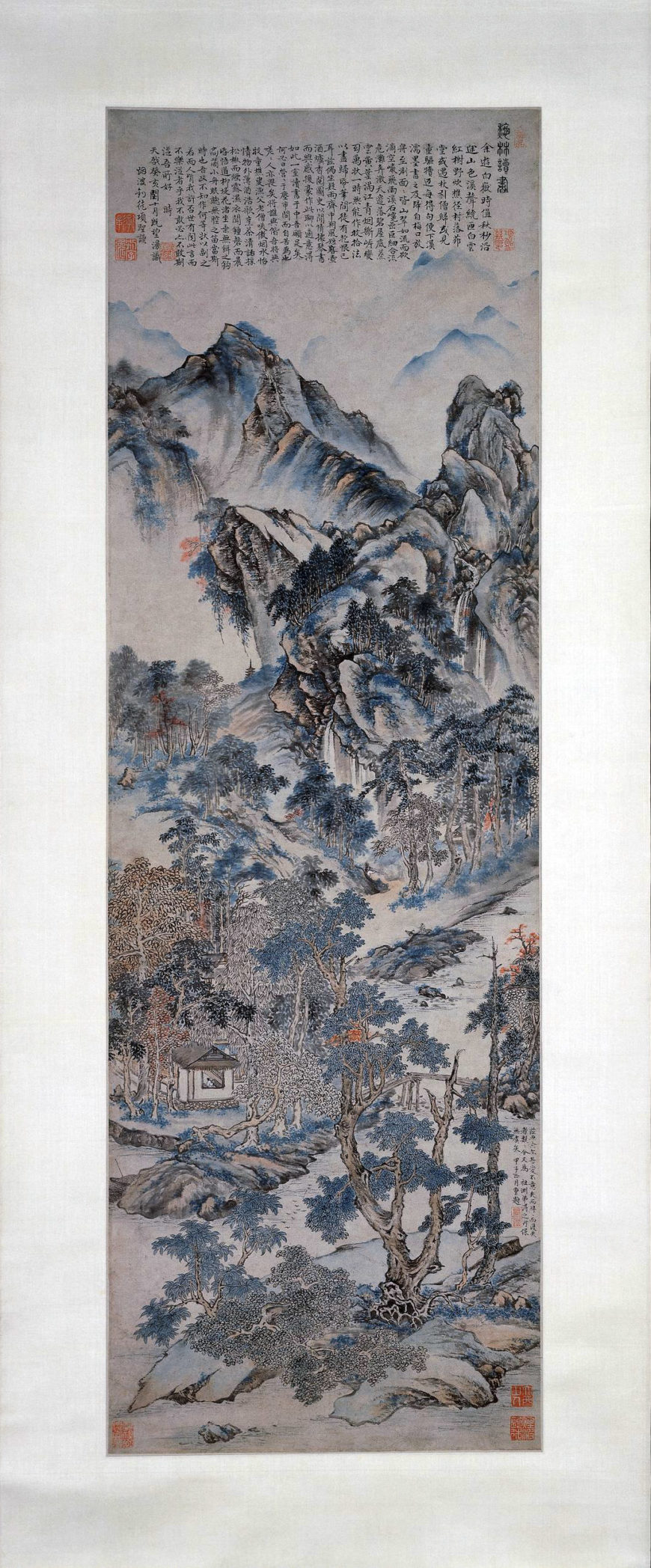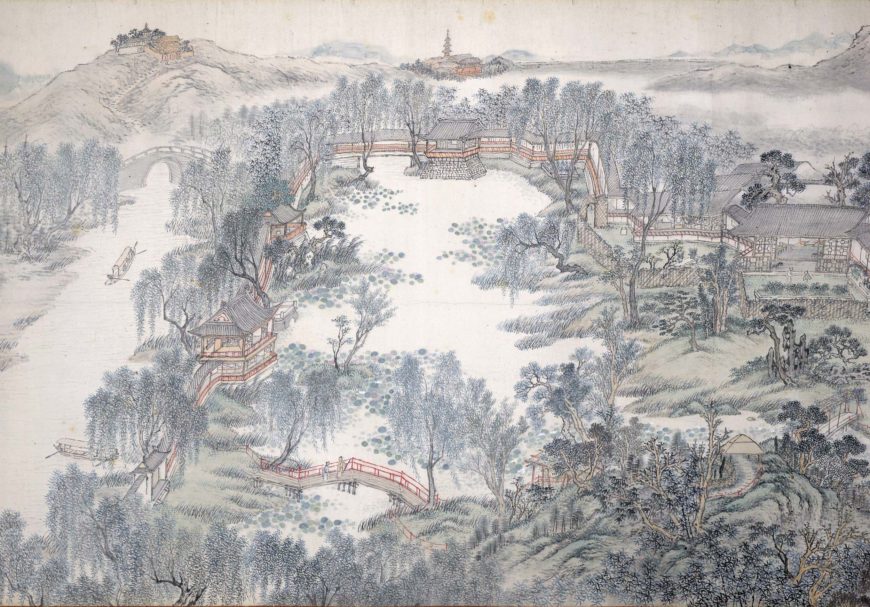
Tang Yifen 湯貽汾, Aiyuan tu 愛園圖 (Garden of Pleasure), handscroll, 1848, Qing dynasty, paint on paper, China, 59 x 160 cm (© Trustees of the British Museum)
South of the river
For hundreds of years the fertile area to the south of the River Yangtse has been associated with painters. In Chinese this region is called Jiangnan or ‘South of the River’. It includes such beautiful towns as Suzhou, Hangzhou and the Lake Tai area.
Here intellectuals and men of culture escaped or retired from political life in the capital to a life of leisurely, scholarly pursuits. Mostly wealthy and educated, the men would exchange paintings as gifts on special occasions or sometimes produce works together at poetry and painting parties, listening to music, and drinking wine in garden settings.
Gardens were an important part of life for these Chinese scholar-painters. They were seen as miniature landscapes and naturally eroded rocks were placed at the major viewing points among twisting and turning paths and streams. Each viewing point had its own name and perhaps a verse inscribed on the rock. The gardens of Suzhou were particularly famous during the Ming Dynasty.
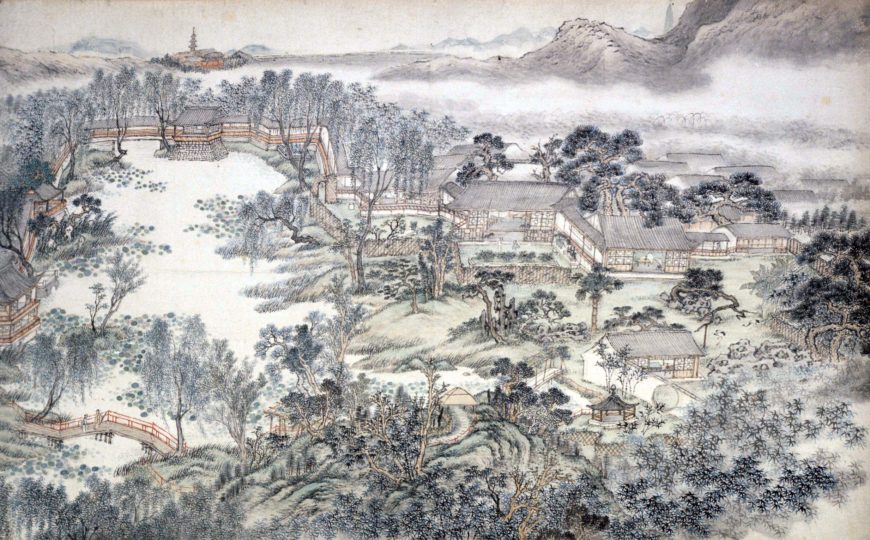
Tang Yifen 湯貽汾, Aiyuan tu 愛園圖 (Garden of Pleasure), handscroll, 1848, Qing dynasty, paint on paper, China, 59 x 160 cm (© Trustees of the British Museum)
This painting by Tang Yifen is called The Garden of Delight. It depicts an ideal garden, painted in the orthodox style. There are twenty-six poems following the painting as well as many colophons or comments in praise of the garden.
Writing and seals on paintings
Miniature mountains
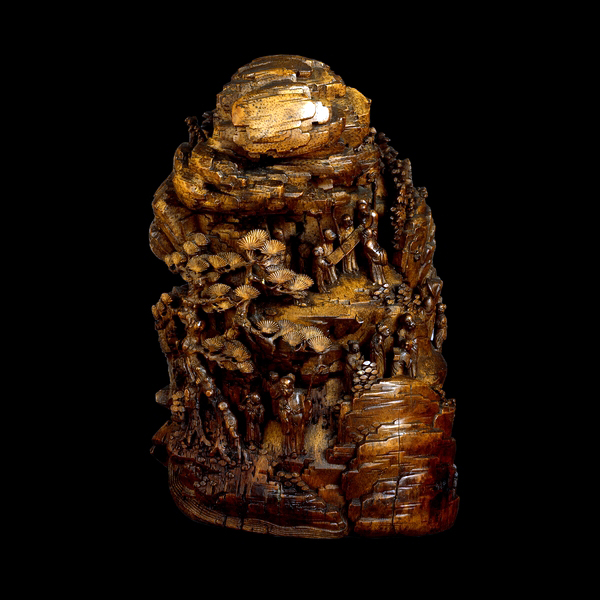
Miniature mountain of bamboo root, carved to look like a rock, Qing Dynasty, 18th century, China, 24.8 x 30.4 cm (©Trustees of the British Museum)
Scholars often collected miniature mountains, carved out of different stones, to place on their desk. Mountains, because of their height, were seen as a bridge between earth and heaven. They were also linked with long life and immortality.
Small representations of mountains signified the retreat of the scholar from official life as well as a route to Paradise. They were rather like three-dimensional landscape painting and they brought the natural landscape into the study. Some were carved with hermits’ caves, reinforcing the idea of escape from the world into the beauty of nature. Brush rests were sometimes made in the shape of mountains. They had either three peaks or five, representing the Five Holy Mountains.
Rocks, representing miniature mountains, were also collected and placed where they could be admired, either in the study or in the garden. Some had been naturally eroded by water into strange shapes and were particularly admired and sought after.
© Trustees of the British Museum

